This Week in the Garden: So Many Pests
Dealing with dying plants and one new problem after another has me feeling a wee bit stressed.
These past few weeks in the garden have been disheartening. For every plant that’s thriving, another seems to throw in the towel.
The Viola in the corridor has taken on a sickly yellow hue. Two of my Myoporum on the retaining wall went into a dramatic decline almost overnight—leaves yellowing, stems snapping off. The Caprobrotus and Chrysocephalum look like they’re ready to kick the bucket.
Further along the wall, half a dozen more Myoporum showing the first signs of a Scale infestation with tiny black ants guarding their precious herd. Yep, you read that right. Ants have a symbiotic relationship with sap-sucking insects like Aphids and Mealy Bugs, guarding and herding them to the juiciest parts of the plant. “Milking’ the insects for their honeydew. Nature is incredible.
My treasured Finger Lime has finally fruited for the first time in two years. But the joy was short-lived. Just yesterday, I discovered it’s become a breeding ground for Citrus Gall Wasp larvae. The branches swollen with small knots. Evidence of the unwelcome visitors.
Two Callistemon had begun to look sad and sickly. Half the leaves disappeared in the space of a week. Closer inspection revealed a small army of the most repugnant caterpillars I’ve ever seen: Sawfly larvae.
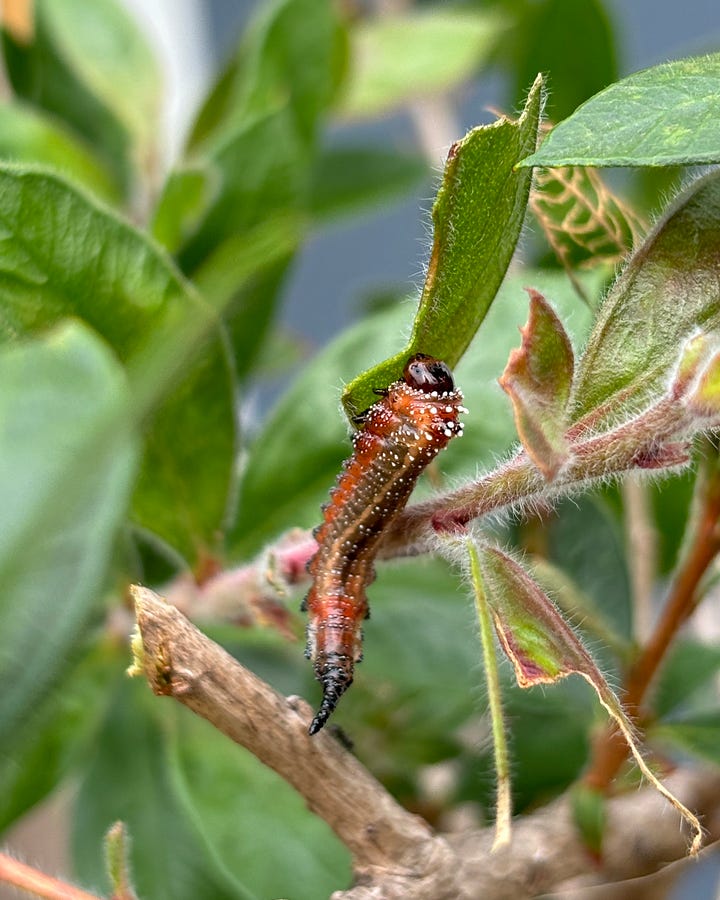
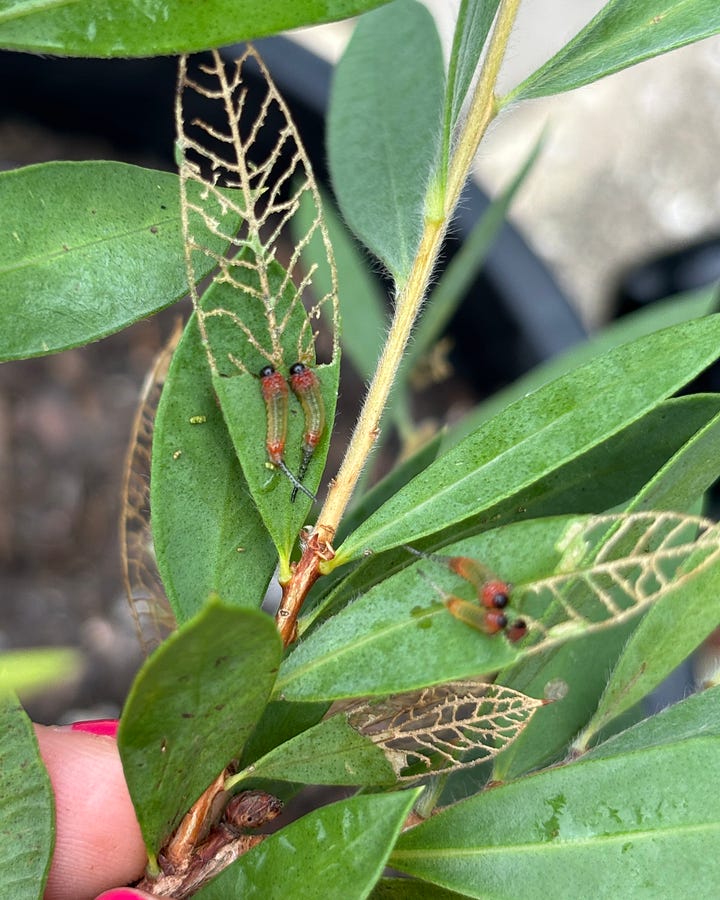
The big ones looked threatening. The tiny ones lined up neatly, like soldiers on a mission to strip the leaves bare. Alongside them, I counted at least twenty of these still unidentified tiny black insects adding to my pest-induced stress.
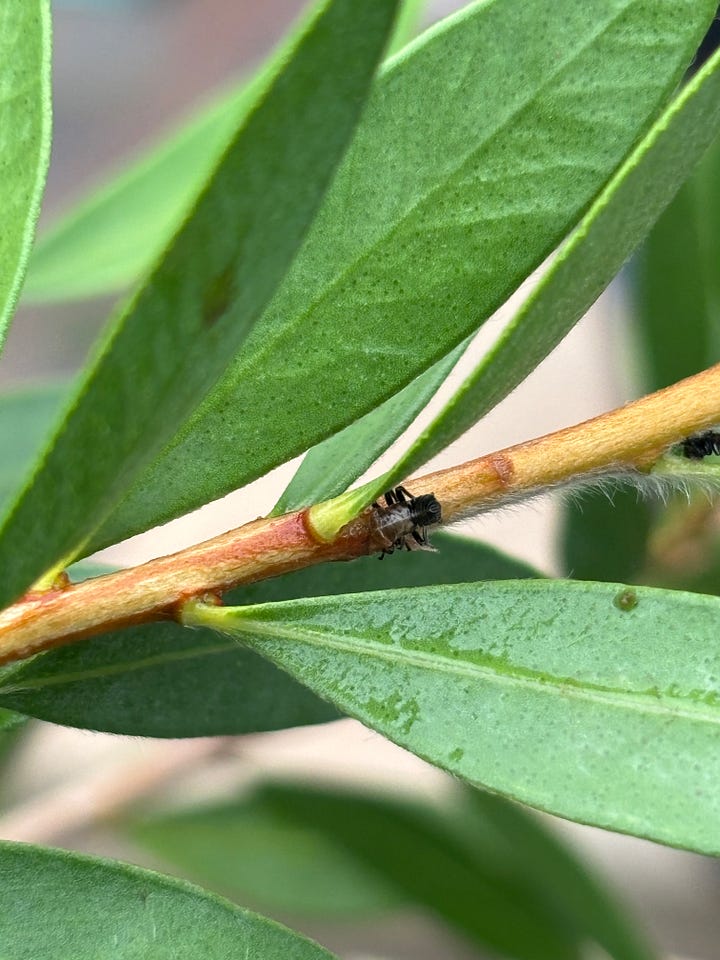
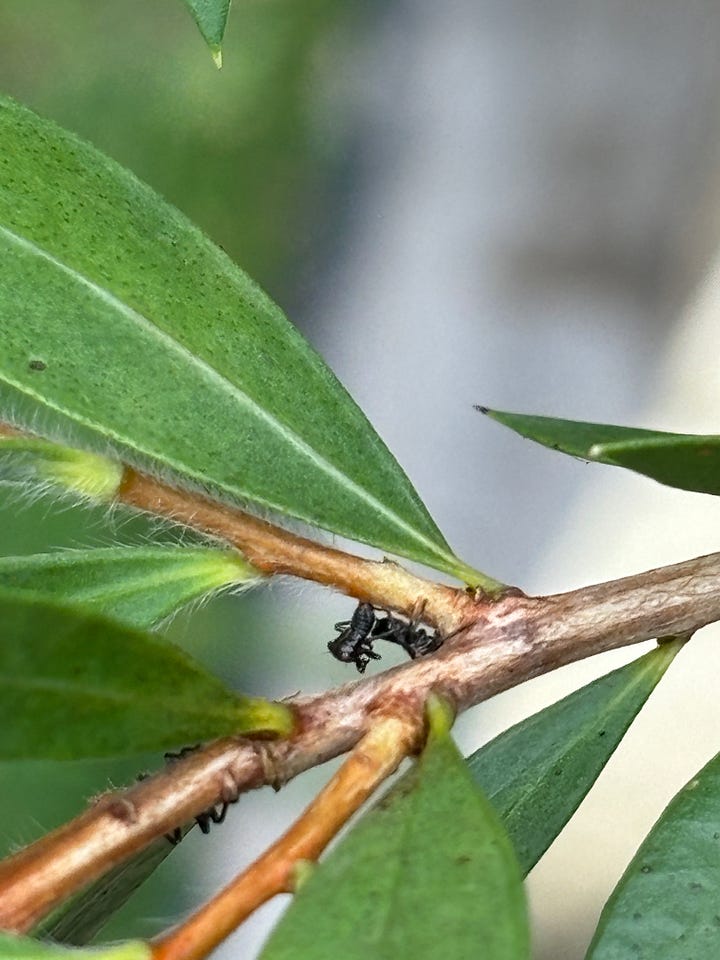
The White Lace Melaleuca. Another victim, overrun with scale. And after a month-long battle with the Cabbage moths, I finally surrendered and ripped out the last of the kale from the veggie patch. Fed up with the daily ritual of picking off caterpillars.
The final insult? My favourite Plectranthus, the leaves curled and chewed, sprinkled with clumps of black soot. I suspect caterpillars, though I've only caught one in the act.
On their own, these issues wouldn't be so disheartening. But all of this unfolded over the last few weeks, discovering one new problem after another. It felt overwhelming.
I was, and still am, frustrated at all the problems. I knew going in that not using pesticides would have its challenges, but I didn’t fully consider potential issues a garden could have. Maybe I was a bit naïve, or overly optimistic.
I've lost plants, and I will likely lose more. But I do have some solutions (shared further down), and a few of the plants are already bouncing back. A testament to the resilience of Australian natives – and, I like to think, to my own stubborn determination.
While I was picking the sawfly larvae from the Callistemons (yes it was as disgusting as it sounds), I thought about The Biggest Little Farm (an excellent doco, highly recommend). They had a snail infestation in their orchids. Each snail multiplying quicker than they could pick them off. The quote that has stuck with me. “We don’t have a snail problem; we have a duck deficiency.” Bringing in ducks solved the snail problems and the nitrogen from the duck’s poop helped fertilise the soil. All about working with nature.
Now, I won’t be adding ducks to the garden any time soon. But it did get me thinking about our gardens as self-sustaining environments where natural predators keep pests in check.
Balance is the goal. Focusing on biodiversity.
More varieties of plants to attract different wildlife – insects, birds, lizards, frogs. Growing species that suit my local environment. Which will lead to healthier plants and create more resilient ecosystems. Simple enough in theory. Somewhat more challenging to practice.
Researching each issue and pest and formulating a game plan has given me a sense of control. I know what I have to do, and I’m determined to nurture every plant back to health.
Alongside the pest and sad plants, I’ve also made a few mistakes with some of the plants I chose and their locations. Having to pull some out, seeing others die. You do feel like a bit of a failure some days.
Then last week I read an article on The Design Files: “How Trial + Error Lead To This Enchanting Hillside Garden”. The owner, Louise, shares how it took seven years of experiments and failures to learn what plants would work for their half-acre block in Mount Dandenong.
It makes me feel a lot better about my mere four months of planting errors.
Nobody talks about the teething problems, the days when everything seems to be dying, or the moments of doubt. Plant knowledge doesn’t just happen overnight; it’s a slow accumulation, learning by doing and adapting.
Alfresco update
The alfresco space has come a long way since my last update.
We have structure, and walls and columns, a seat, and a garden bed! The space feels enormous, almost as if we've added a whole new room to the house. I’ve mentioned before we don’t have a dining room, so this area is where we’ll eat, and entertain. A space we spend most of our time. I walk out there at least a dozen times a day to stand and marvel at it all.
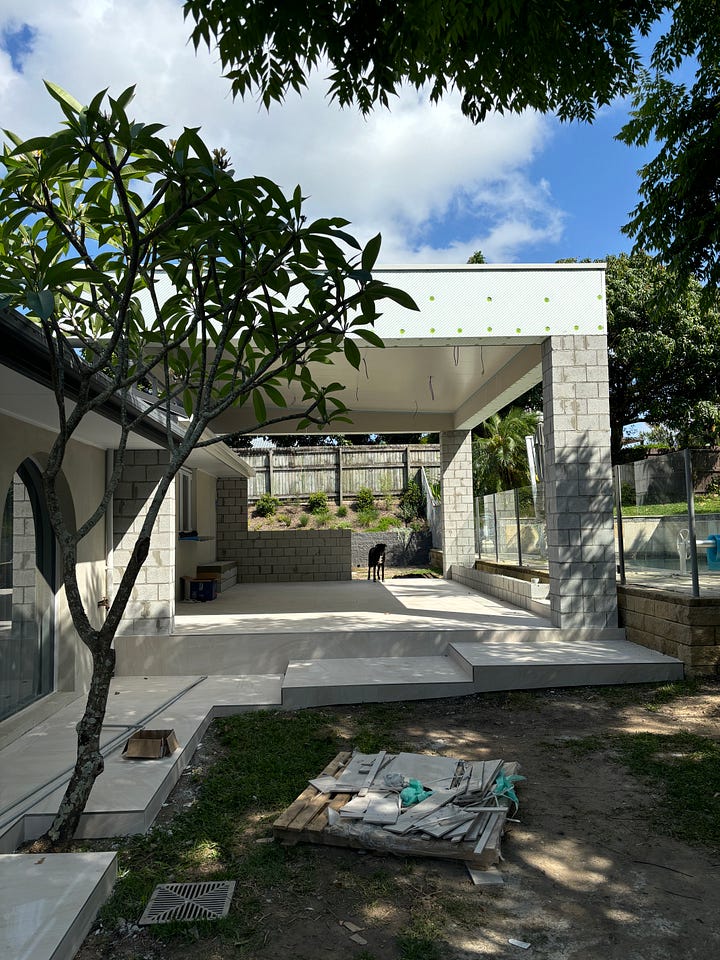
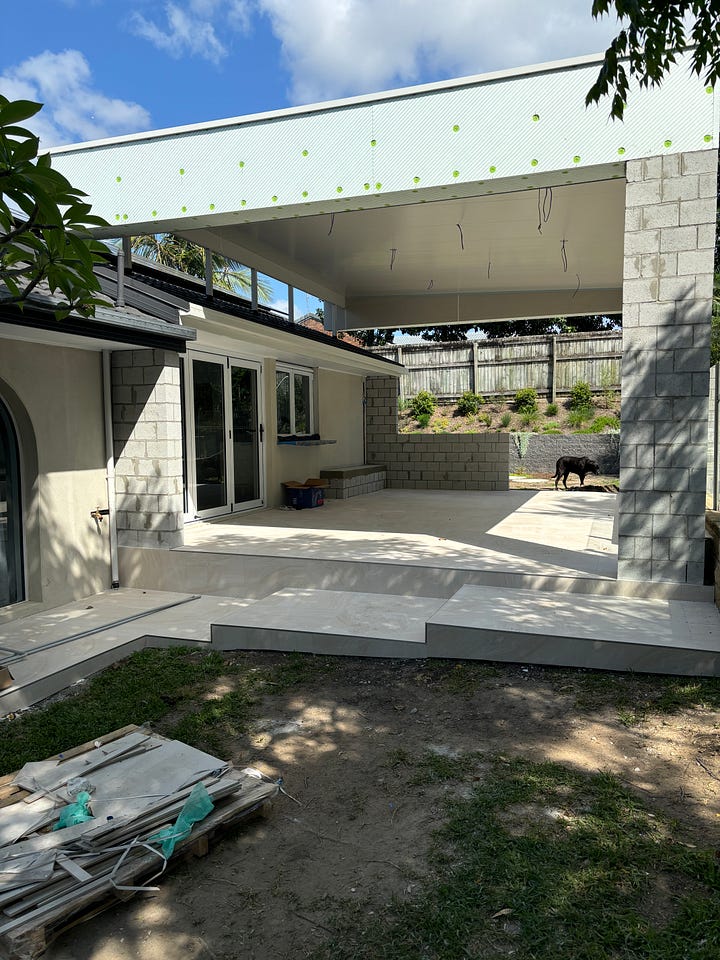
The tiling wrapped up last week and with weather permitting this week (a recurring theme in the ongoing renovation saga), the next steps will be rendering and painting. The 70ml of rain we had last night might say otherwise.
The alfresco garden, which I’ve been dying to plant, is now tantalisingly close. I’m picking up the plants this weekend. I’ll finally have a new garden to share with you in the next update.
The last bit to be installed is the concrete BBQ bench and cabinet doors. After some eye-wateringly expensive timber quotes, we’re going to attempt to make the cabinet doors ourselves.
With that nearly wrapped up, we’re ready to landscape and bring the rock garden to life. That space outside the alfresco and retaining wall connecting to the corridor. The next project to chip away at a few hours at a time. Prepping the garden, which involves digging out some of the clay to level the ground and direct the water flow to the drains. Moving bricks where trees will be planted – leaving the rest to fill in the ground and save soil.
Soil arrives this Friday, and the thought of hauling it up our steep front lawn has me bracing for a serious workout. We’ll lay geofabric to separate the soil from the rocks and then, finally, plants (the fun part!), before topping it all off with crushed rocks.
I’ve created the planting schedule and a rough design – inspired by this mood board. All going to plan, this space will look pretty special. I hope!
When it comes to the design, I’m really just winging it. I very much enjoy the research portion, learning about the plants and making planting lists. I can tell you everything there is to know about specific plant species.
I know the rules about planting in threes, layering different heights, creating focal points. But when it comes to putting it all together, making the garden visually appealing, I get a bit lost. So, we’ll see how this next section comes together. At the end of the day, as long as we love the garden, a perfect design doesn’t matter.
Having a garden, especially one of this size, is a privilege and one I’m very grateful for every day I spend enjoying it.
This week in the garden
A pair of Kookaburras (Dacelo novaeguineae) have become familiar faces in our street, often seen perched in the trees across the road from our house.
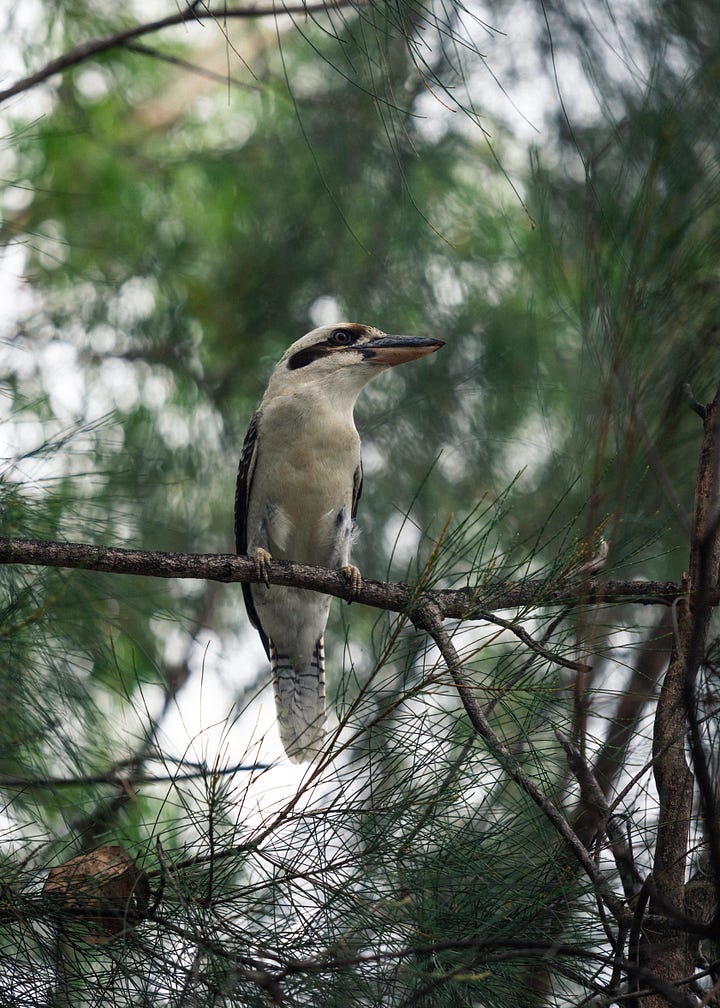
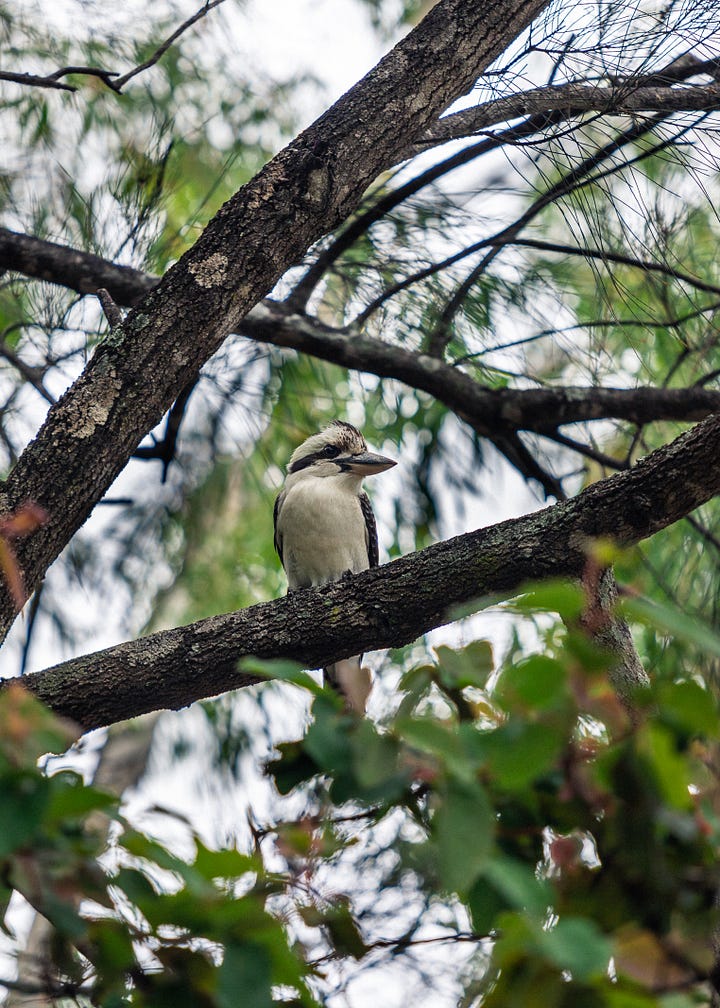
We had three solid downpours in the last four weeks. The retaining wall, layered with mulch and now well-rooted plants, held firm as glugs of rainwater streamed across the top. Even with pools forming at the base and drains struggling to keep pace with the deluge, the soil stayed put. It was gratifying to see the efforts paying off.
The front porch garden received a tidy-up. I finally pulled out all the Dichondra Silver Falls, which had lived up to their reputation as overenthusiastic spreaders. Smothering the rest of the ground covers—Pratia, Viola, and Dichondra repens—so out they went. I’ve planted a few new Dichondra and Pratia seedlings, which should fill in the gaps over the next few months. This was the first section of the garden we planted, back in June, and I often come here to remind myself that growth takes time. The Westringia in the corner, now lush, nearly didn’t make it in that first month. The leaves yellowed, and it dropped all its flowers. The Viola wilted at the first missed watering, and Lomandra grasses wouldn’t grow an inch. Now, five months on, this garden is thriving.
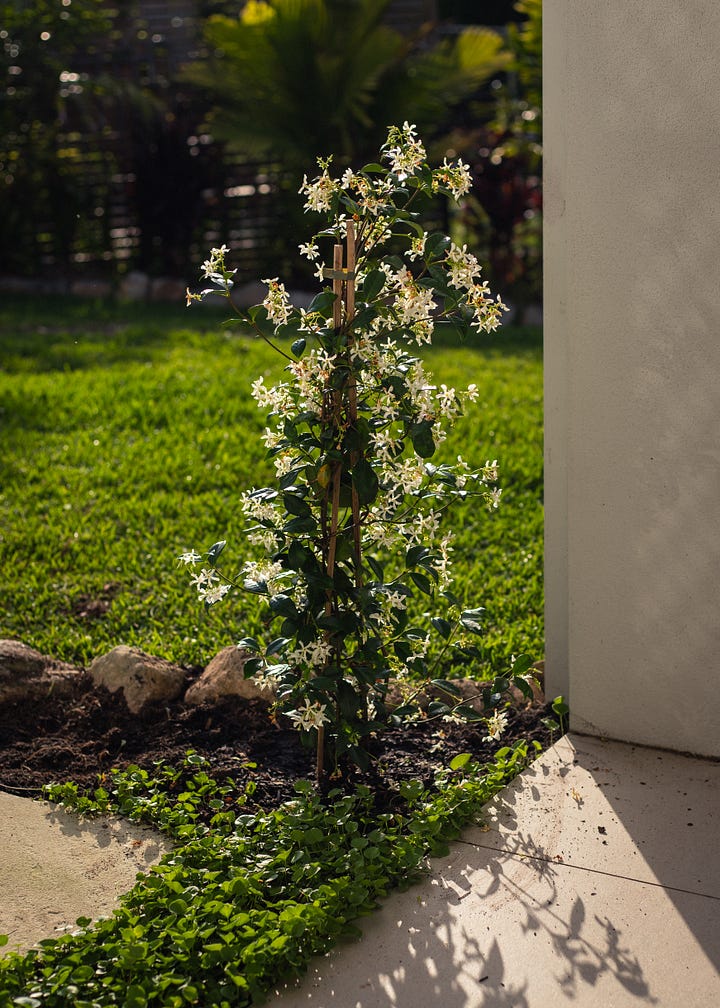
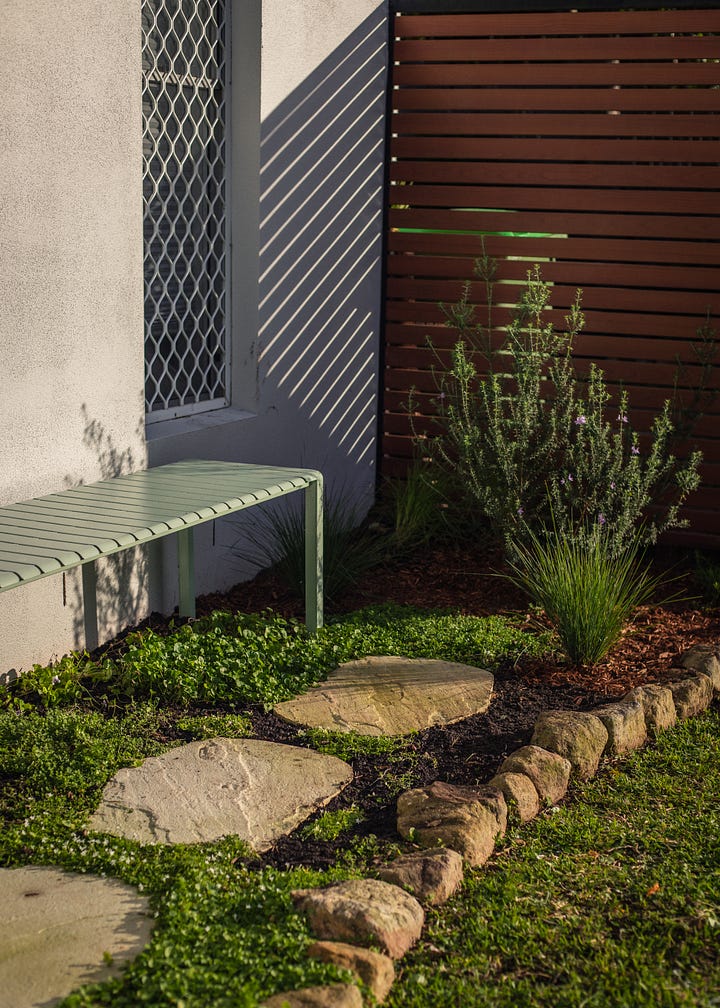
My new favourite flowering native. These Bulbine lilies – Bulbine vagans. A clumping monocotyledonous perennial, grows to about 60cm. I picked them up at that native market in Brisbane a few months ago. They’ve been left in their pots, not sure where to plant them. I realised this spot underneath the Bangalow palm was perfect. Part filtered shade with a few hours of full sun through the middle of the day. Stunning bright yellow flowers. I gave them a deep water 2-3 times a week for the first few weeks, and now a month on, they’ve settled in and doubled in size. These should flower for the next month or so then the flowers die back in summer.
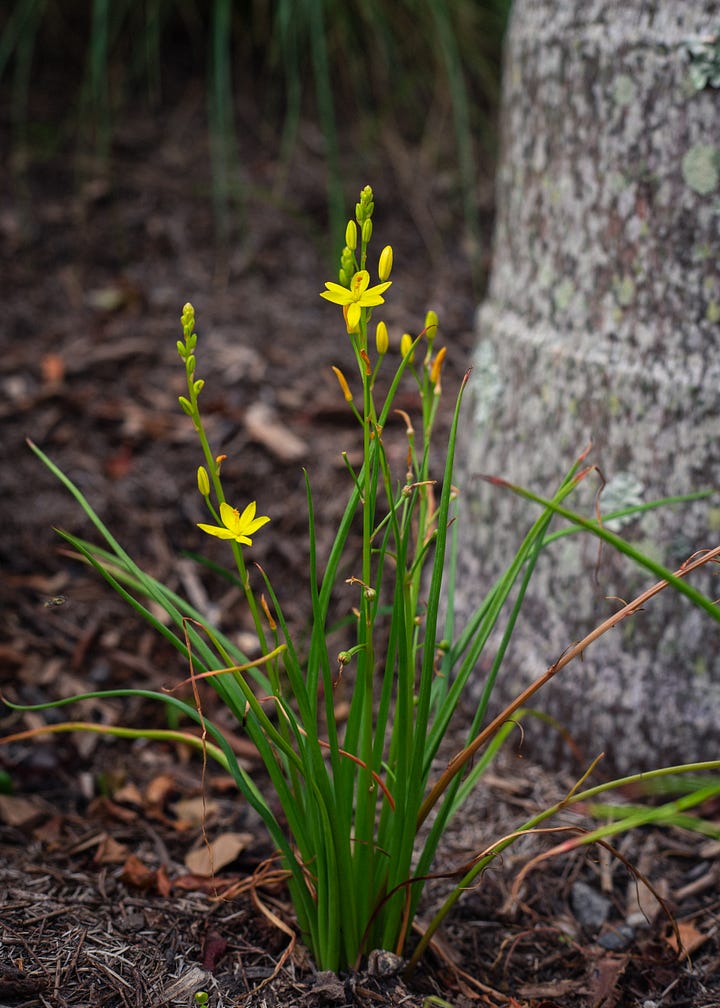
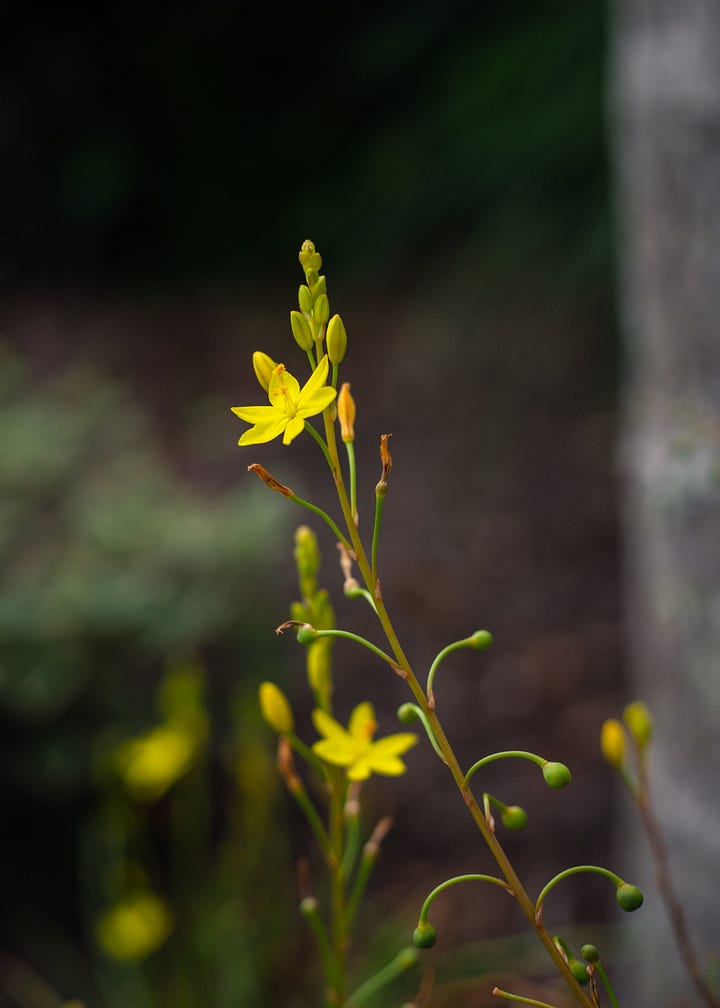
The Blue Banded Bees (Amegilla cingulata) have also been making more frequent appearances, three or four a day, favouring the Plectranthus. I noticed in my previous garden they loved the purple flowers on the prostrate rosemary. I should plant more to attract them.
A caterpillar of the welcome variety. A Yellow Admiral Butterfly (Vanessa itea). This butterfly encyclopedia is excellent for helping identify caterpillars and butterflies in your garden. If you want to attract more butterflies to your backyard, you need to plant for them. Plants and the animals they support have co-evolved together over millions of years. Some butterflies and their caterpillars will only feed on a small number plants. These plants are declining as we replace natives with introduced species in our gardens. If you’re not sure what to plant to attract different types of wildlife, this resource guide is a great place to start. Specifically the local council websites section.
Spotted the first Leafcutter Bee (Megachile spp.) also enjoying the Plectranthus flowers (all the more reason to protect it!). Another excellent resource to help you identify Australian native bees. I mentioned it before: The Australian Native Bee Book by Tim Heard is brilliant for all things native bees and beekeeping. I have more excellent gardening book recommendations at the end of this newsletter.
I planted the second veggie bed. I’m trying marigolds and basil to deter pests, alongside bush beans for nitrogen fixing, four different tomato varieties, an eggplant, and Sweet Alyssum for the bees. The tomatoes suffered a little bit of early blight. Common in our humid climate. I removed the infected leaves and so far, they’re still happy. Having a bigger set of beds to work with has been wonderful. I’m still figuring out what to plant, how far to space things, and what grows well in this climate. I’m having a lot of fun on the way. It’s become a daily occurrence, charging into the house, a fistful of kale, or lettuce, or the new zucchini’s (a first for me), yelping excitedly to Dave. Look what I’ve grown!
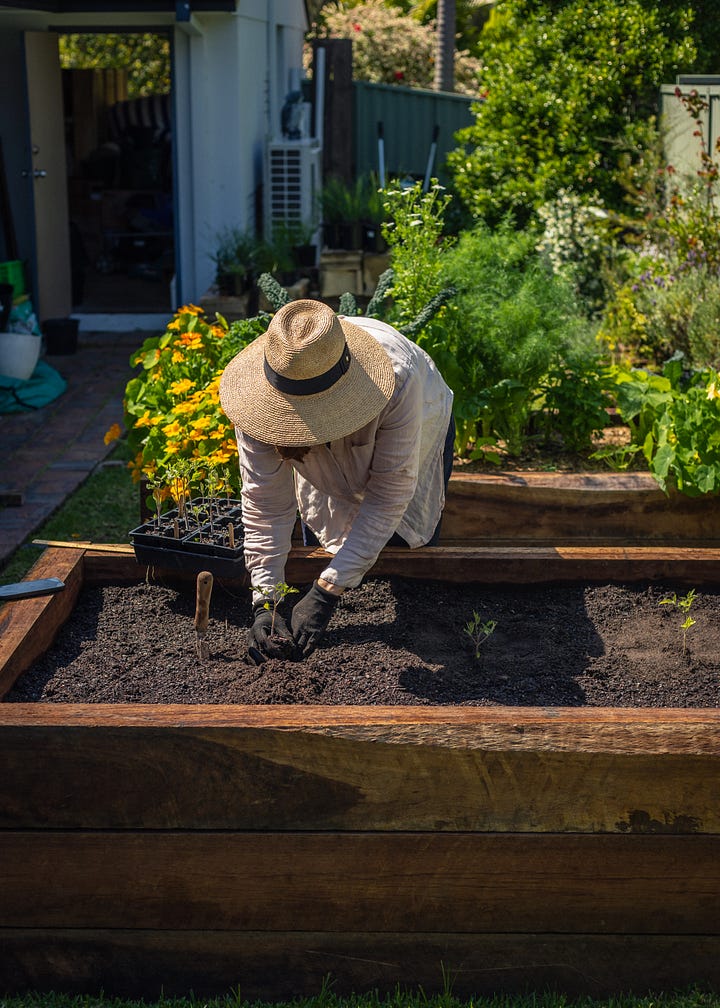
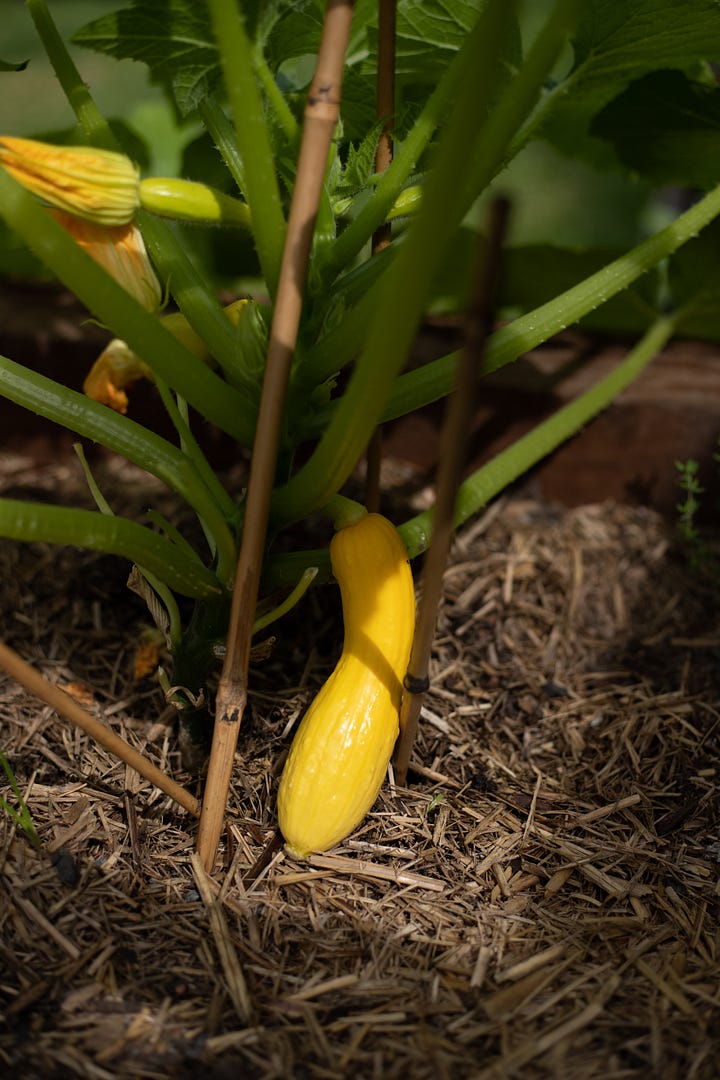
Nasturtiums are a hit with the native bees and the honeybees. Grown from seed, only $1.50 a packet, with hundreds left for the next round. I love this store for seeds and plant advice. Grown mostly to help ward off pests, they’ve become an unexpected food source for the bees. I’m counting 2-3 dozen native stingless bees (Tetragonula carbonaria) every day. Golden pollen pouches clinging to their back legs. I’m obsessed, I could watch them for hours carrying on with their business.
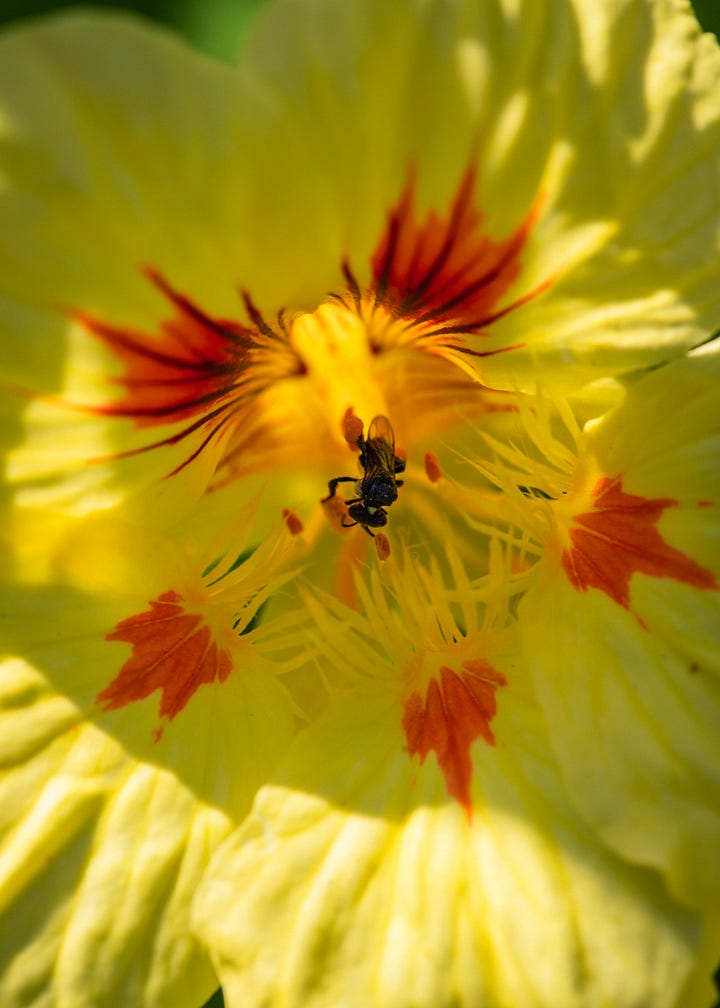
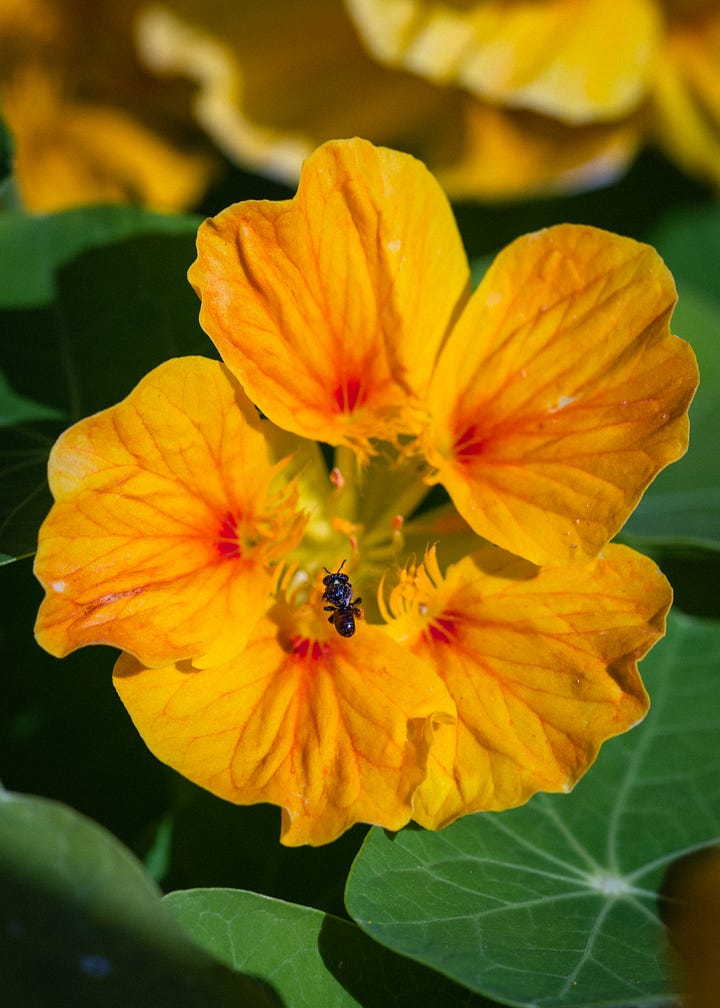
We made serious progress on the greenhouse (it’s much further along than these pics), which now just needs doors. Dave deserves the credit; he’s worked on it, bit by bit each morning before heading to work. I’m completely smitten with it. A long-time dream come true. Going to pop into the salvage yard. Burleigh Secondhand – it’s brilliant. We’ve found everything from 40-year-old tiles to match the ones on our roof, to recycled timber for the veggie beds. Hoping to find some bits to make some potting benches. I’m also on the hunt for some sturdy shelves for the back wall. Taking recommendations.
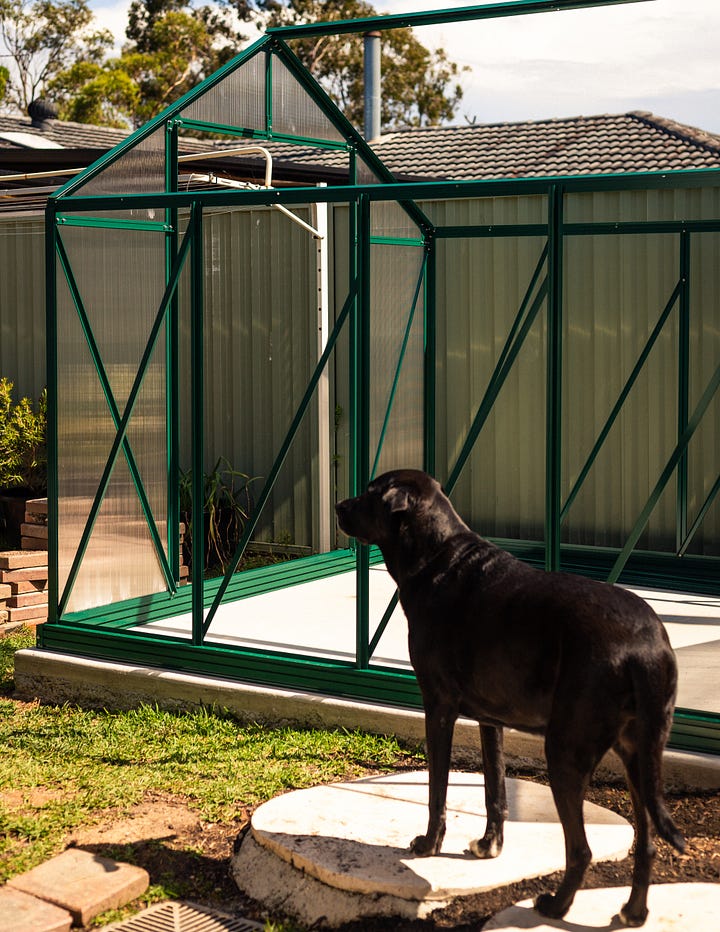

With all the rain, I’ve seen another explosion of growth. I’ve noticed the natives thrive with rainwater. We’re working on having a second water tank installed early next year, with the goal to water the gardens exclusively from the water tanks.
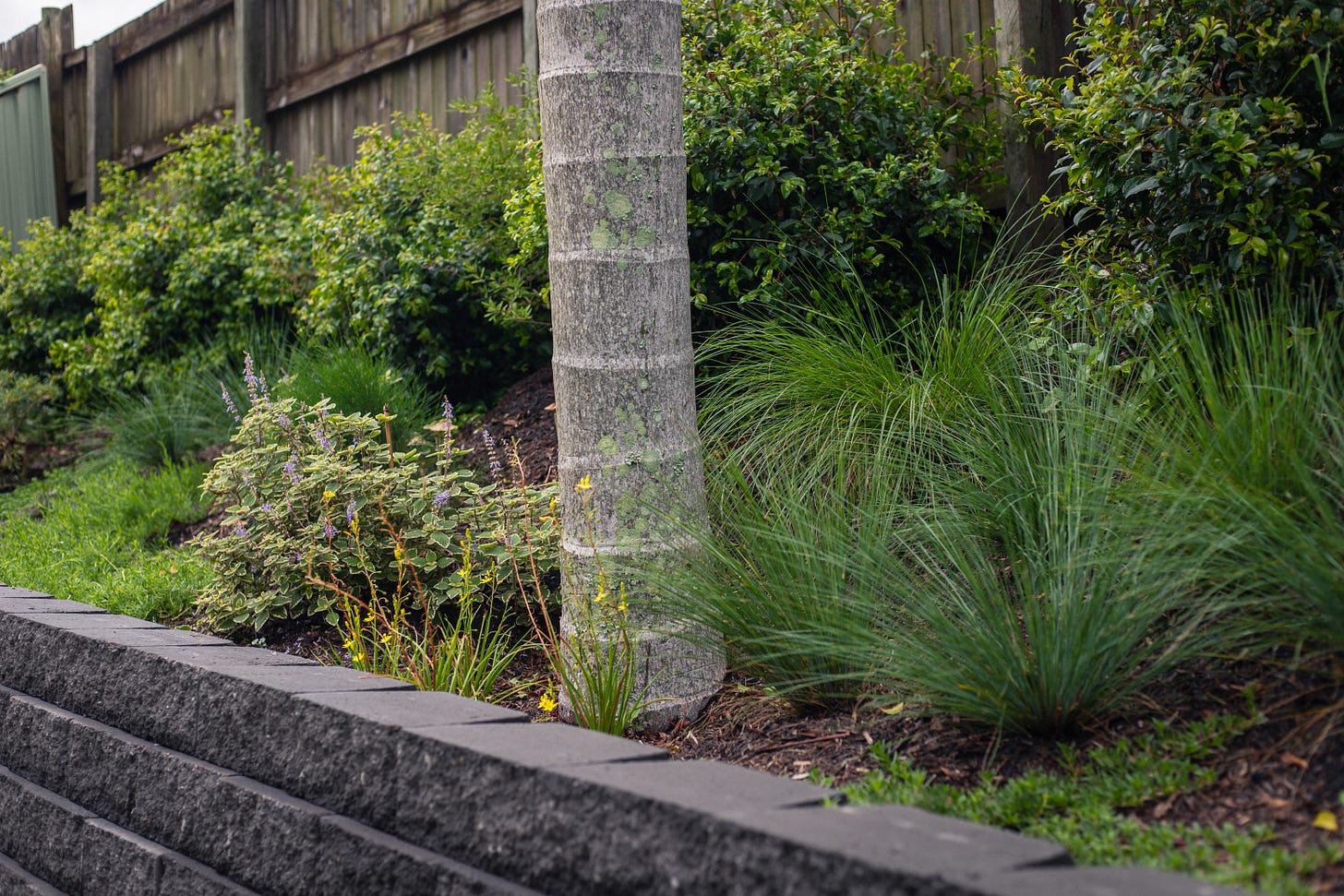
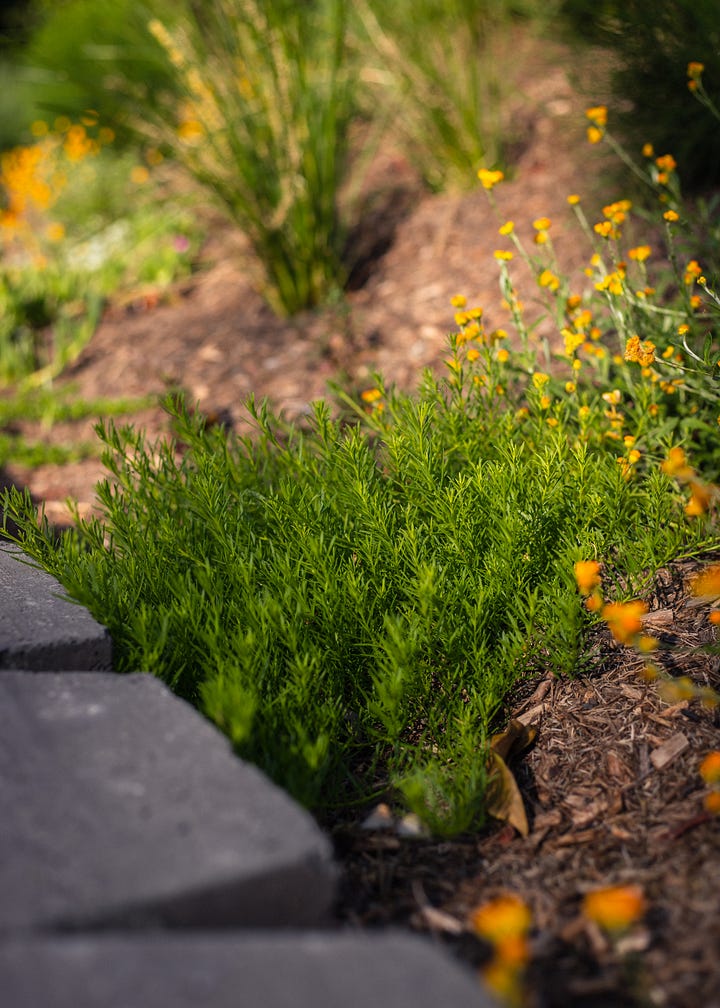
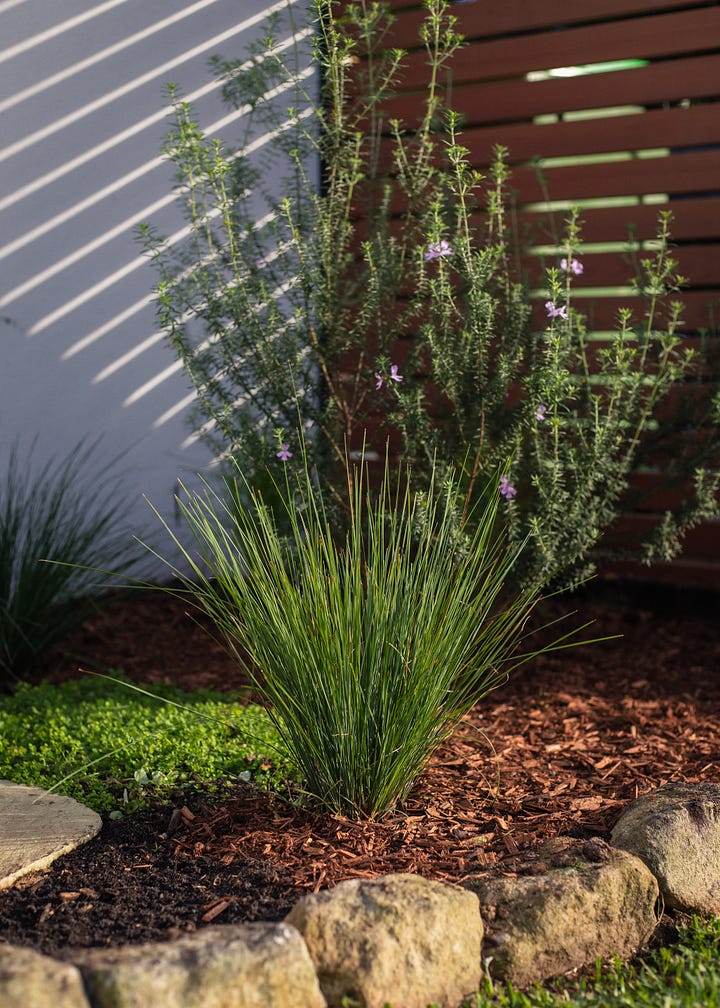
Despite the issues and a few setbacks, the garden is beautiful, and the plants and wildlife bring us so much joy.
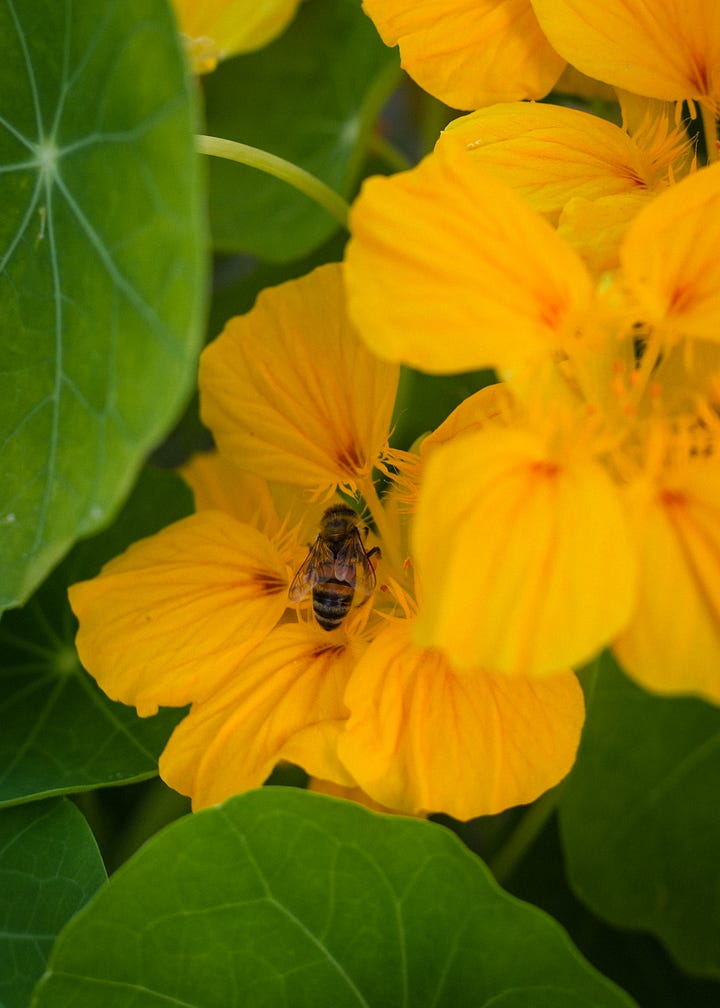
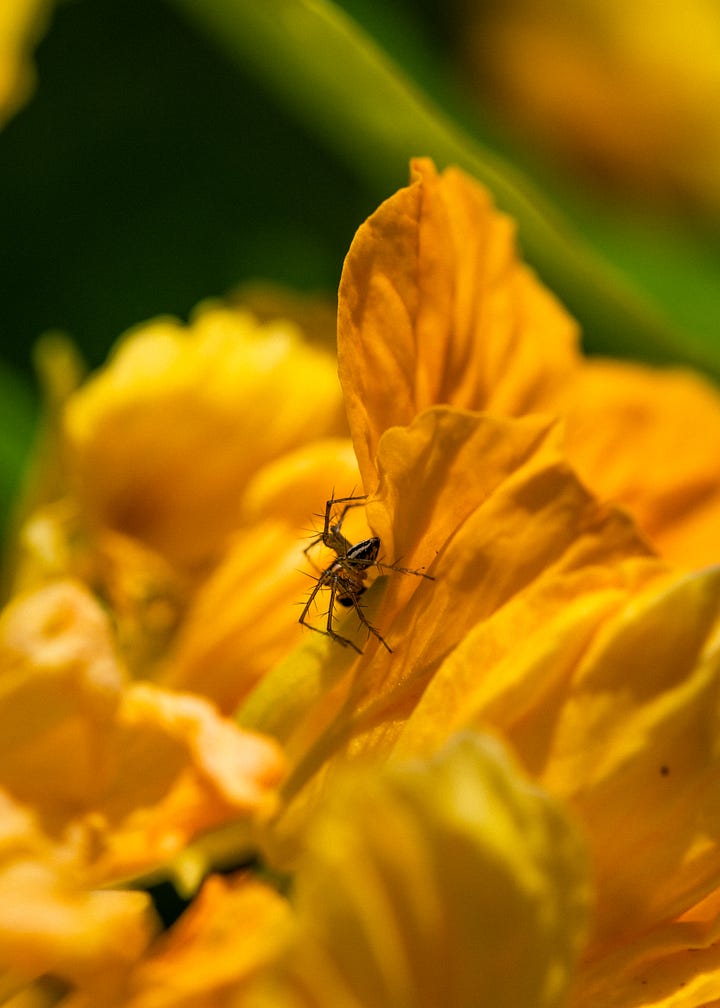

The pests and issues and how I’m dealing with them
Viola (Yellowing Leaves)
Issue: Likely a mix of overwatering and heat stress. I planted them in winter when the area had mostly shade. Now, with spring and summer, the same spot gets up to six hours of full sun.
Solution: I’ve adjusted the watering schedule and let the soil dry out over the past ten days, relying solely on rainwater this week. The violas are already looking healthier, with new blooms appearing. I’m also planning to plant small trees to create more shade in this area.
Myoporum (Dieback and Scale Insects)
Issue: Dieback with yellowing leaves and brittle stems, likely due to overwatering. Scale insects have taken advantage of the stressed plants.
Solution: I've stopped watering these now well-established natives, as they really don’t need much extra water. I pruned back the dead sections and the rest of the plant is looking vibrant and green. For the scale, which is mainly at the branch tips, I’ve cut back the affected areas. I'm cautious about using Eco Neem after reading mixed reports on bee safety. Instead, I’ve purchased lady beetle eggs to release in the garden, in hopes they’ll naturally manage the scale problem.
Callistemon (Sawfly Larvae)
Issue: Sawfly larvae lining up in ranks to strip leaves bare.
Solution: I handpicked and squished the larvae, but if there are birds nearby, tossing the larvae on the ground is a good option—they’ll take care of them. To encourage more natural predators like parasitic wasps and predatory beetles, I’m working on increasing the garden’s biodiversity. I’ve also spaced my potted natives further apart to improve airflow and make it easier for birds and insects to help out.
White Lace Melaleuca (Scale Infestation)
Issue: Scale insects stressing the plant and causing damage.
Solution: The sturdy branches made it easy to give the plant a forceful hose down, dislodging many of the insects. Once the lady beetles arrive, I’m hopeful they’ll keep the scale in check. Over time, I’m hoping the garden will build up a healthy population of beneficial insects, like lacewing larvae and hoverflies, to maintain balance.
Plectranthus (Curled and Dead Leaves)
Issue: Leaf curling and black sooty mould, likely from caterpillar feeding and secondary mould infections.
Solution: I’ve removed and disposed of the worst-affected leaves. Trimmed some branches to improve airflow around the plant, and will manually managing the caterpillars, checking on the plant every morning. Smaller birds will predate caterpillars. The Noisy miners find the ones in the Lilly Pillies. I need to make the rest of garden attractive to them, so they lend a hand in caterpillar management.
Finger Lime (Citrus Gall Wasp)
Issue: Swollen, deformed branches caused by Citrus Gall Wasp larvae.
Solution: I’ve pruned off the galled branches to prevent the larvae from maturing. I’m keeping a close eye on the tree and hoping that more natural predators, like wasps and parasitic flies, will help manage the problem in the future.
Overall, I’m facing a predator deficiency in the garden. Something I’m actively working to fix in the form of more plant diversity. In the meantime, one suggestion I’ve come across for dealing with sap-sucking insects is a homemade spray made from dish soap, water, and a touch of olive oil. Have you tried this, or do you have your own tricks for managing these pests? I’d love to hear about your experiences and any go-to solutions you swear by!
Garden Adjacent
Welcome to the first "Garden Adjacent" segment. A space where I’ll share the books, garden inspirations, and helpful finds I come across in my daily wanderings. Things I love and think you will too.
Reading: Why Women Grow by Alice Vincent
This beautifully reflective book dives into the stories of women who cultivate, tend, and grow, exploring the emotional and cultural ties we have with the land. A must-read for those who love the therapeutic, grounding magic of gardening.
Watching: This incredible plant library
I stumbled across this visual delight on Instagram. Just wow. The dream to visit gardens like this around the world.
Garden Tools: A stand-up weed puller & knee pads
Two unglamorous yet brilliant tools: a stand-up weed puller. I never thought I’d get so excited about a weed puller, but here we are. This one makes the back-breaking task of weeding feel almost… pleasant? And the comfy knee pads saving my knees from a lifetime of regret. Both from Hoselink, I’ve been buying their products for many years. Full transparency, these two are affiliate links.
For Wildlife: A nesting box for our resident kookaburras
For the resident kookaburra pair that I feel are so very close seem to adopting our garden as their domain. I purchased this nesting box. I’m still scouting the perfect spot to hang it, aiming for a mix of safety and prime real estate for our feathered friends. Bought from La Trobe University (because I have to cap my DIY projects), but if you’re feeling crafty, Nest Box Tales has free plans for a variety of species.
Inspired by: Mallee Design
I’ve been soaking up inspiration from Mallee Design. A fantastic site for anyone planting Australian native gardens. Kath Gadd’s work has been a never-ending source of inspiration these past few months. With a deep understanding of Australian natives, her tips have given me the confidence to plant some small trees in sections of the garden I was not overly sure about. And her birdbaths! Beautiful copper dishes that double as functional art pieces for your garden.
A note
Many of you said you would like an audio option with the written newsletter. I did attempt to record this one, but I hated the audio, so I need a better solution before I add them to all the newsletters!




















Ive been missing your weekly posts but this one was worth the wait! In Northside Brisbane I’ve been battling all the same issues, including sawfly larvae - the one type of caterpillar I remove whenever I see them! Thanks for sharing your failures as well as your wins, so we can all learn together. I’ve also really enjoyed your book recommendations. Happy gardening 🌱
This is such a big post full of so much fascinating stuff I am going to make a cup of tea then sit down to read. I gather you are in Australia - I am soon going to Melbourne (from Illinois) for a while where I will be putting in an urban garden. I love your raised beds too. More for me to dig into.